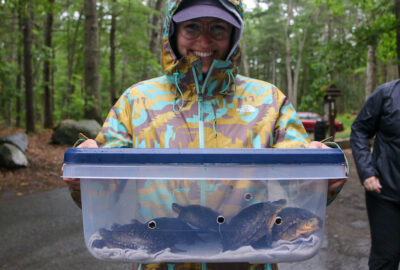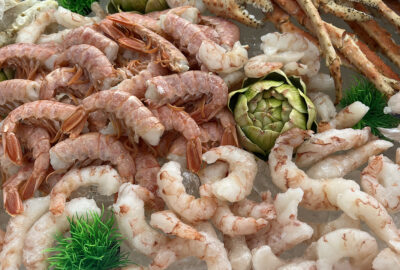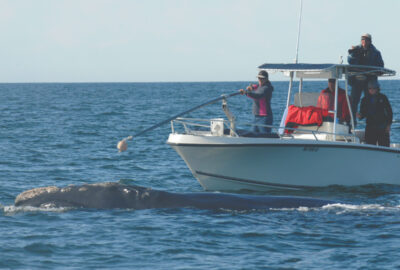
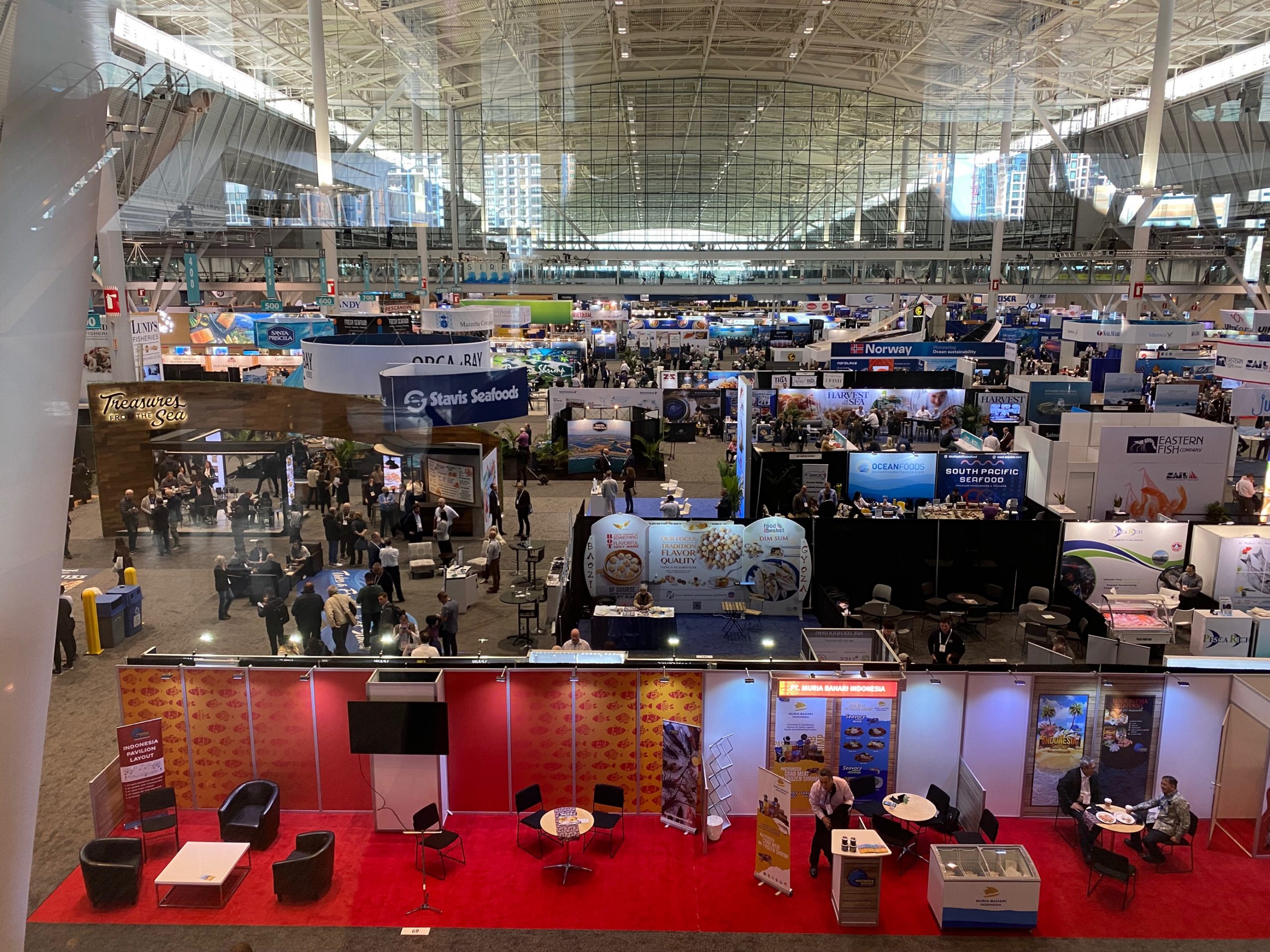
I joined the New England Aquarium as a Fisheries Specialist in September 2019. Soon after, I started hearing about SENA (Seafood Expo North America), which is held in Boston in March every year. SENA is North America’s largest seafood expo, featuring thousands of seafood buyers and suppliers. Attendees represent the “who’s who” of the seafood world – importers, exporters, wholesalers, restaurants, supermarkets, hotels, food service companies – the list goes on! Also in attendance are conservation organizations (like the New England Aquarium) that partner with industry to promote responsible practices and combat a variety of challenges facing the ocean.
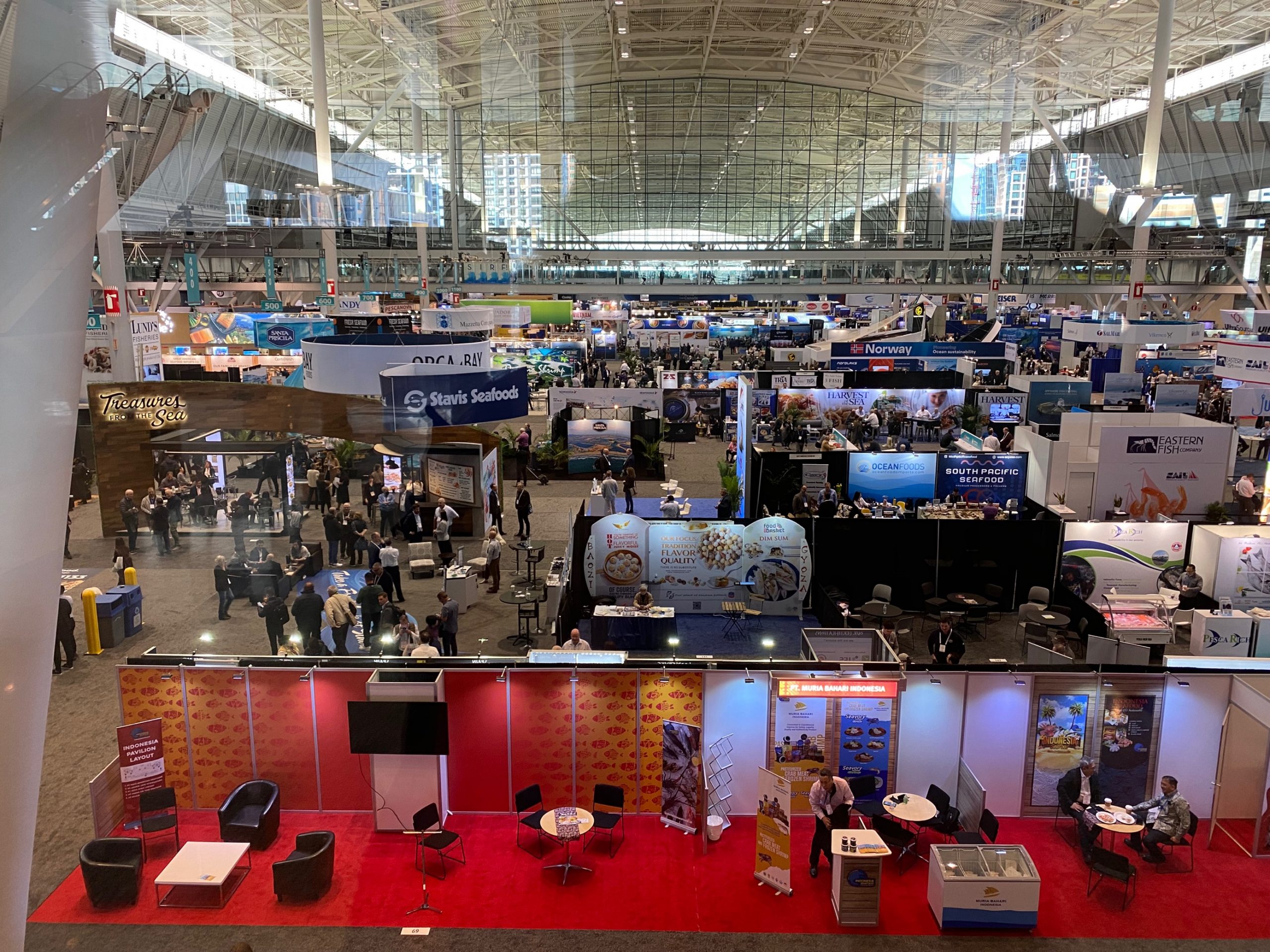
SENA 2020/2021
Two years ago, I was gearing up for my first Seafood Expo. I was so excited to attend — the booths, the panels, the networking, and (most importantly) the free samples! I learned from the rest of the Fisheries and Aquaculture team that tons of preparation goes into attending SENA — we had to schedule side meetings with other organizations, coordinate schedules, and decide who was going to attend what panel. I made sure that I had time blocked off to watch the oyster shucking competition, since both Atlantic (Crassostrea virginica) and Pacific (Crassostrea gigas) oysters were going to be featured. Unfortunately, you can probably guess what happened next. In March 2020, sadly, SENA was canceled due to the COVID-19 pandemic. While that decision was clearly for the best, I was very disappointed to miss my first Seafood Expo. Although SENA 2021 was held virtually, I knew the experience was not quite the same. After all the hype, my experiences with SENA 2020 and 2021 only made me more excited to attend.
SENA 2022
Due to health and safety concerns, we weren’t sure until the very last minute if we would be able to attend SENA 2022 in person this year. But once we received the all-clear, it started to become real! After two and a half years, I was finally going to attend my first Seafood Expo and meet many of the friends and collaborators from all over the world that I had only met virtually!
SENA is held at the Boston Convention and Exhibition Center in the Seaport, which is a giant space. As I walked into the building early Sunday morning, I was met with a view of booths packed with seafood as far as the eye could see (not exaggerating). Luckily, our Aquaculture Program Lead, Matt, a seasoned expert when it comes to SENA, was there with me for my first foray onto the Expo floor. We had a lot of fun looking at the booths and speaking with the different producers. Matt even took our work to promote responsible seaweed farming to the next level by trying a brownie made with powdered seaweed!
One of the benefits of walking around SENA is that it gives you a good idea about which seafood species and products may be “trending” through the upcoming year. This lets us know what species, production, and farming methods might start coming up in our conversations with industry partners, and where we should put more focus looking into environmental and social pros and cons in order to make informed recommendations. I was particularly excited to see that Maryland-caught blue catfish (Ictalurus furcatus) had its own booth at the Expo!
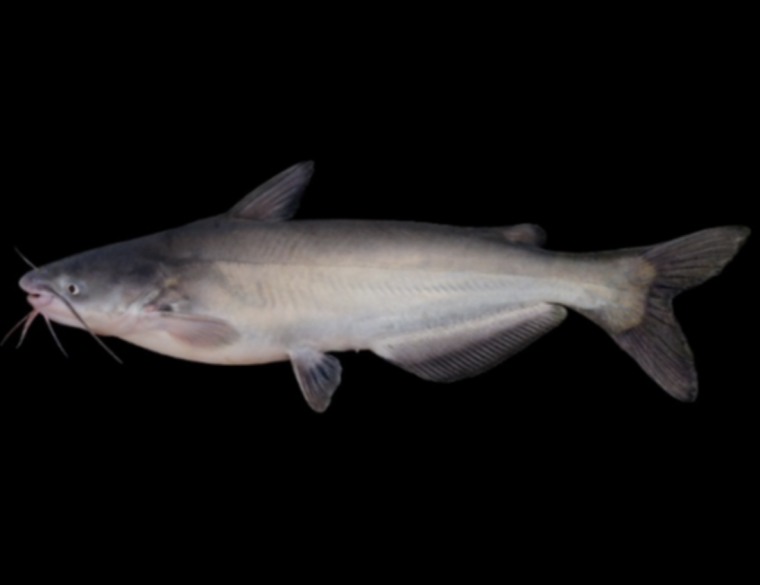
Blue catfish are the largest species of North American catfish, and while they are native to the Mississippi River, they were introduced into the Chesapeake Bay in Maryland in the 1970s, an area where they have no natural predators. Since then, their population size has exploded, causing negative impacts to native species, including the iconic (and commercially important) Atlantic blue crab (Callinectes sapidus). In order to control populations of blue catfish in the Chesapeake and help combat some of these negative impacts, environmental regulators have recommended growing the commercial fishery for the species. Hopefully, the booth at SENA (along with the yummy free samples) will help increase market demand for blue catfish, which in turn, will benefit the Chesapeake Bay ecosystem. Personally, I think the idea of turning invasive species into food is amazing, which is why one of my favorite fish to visit at the Aquarium is the invasive (and delicious) lionfish.
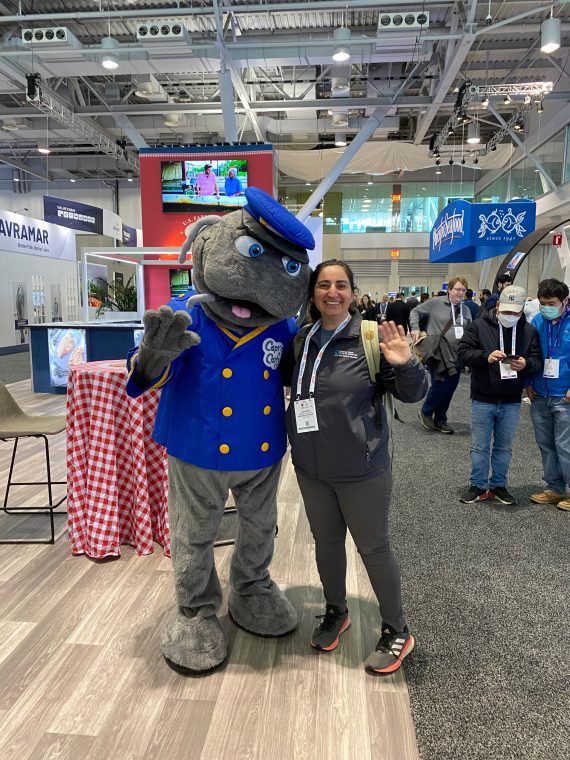
While exploring the Expo floor was a lot of fun, Matt, Michelle (our Bycatch Reduction Program Manager), and I largely spent our three days at SENA networking and digging deeper into some of our key focus areas–reducing bycatch and non-target species catch, encouraging the development of responsible aquaculture, strengthening seafood certification programs, incorporating more elements of social responsibility and equity into our work, and fostering blue innovation. We left feeling re-energized about all of the exciting work ahead, and looking forward to SENA 2023 (where hopefully I get to finally watch the oyster shucking competition!
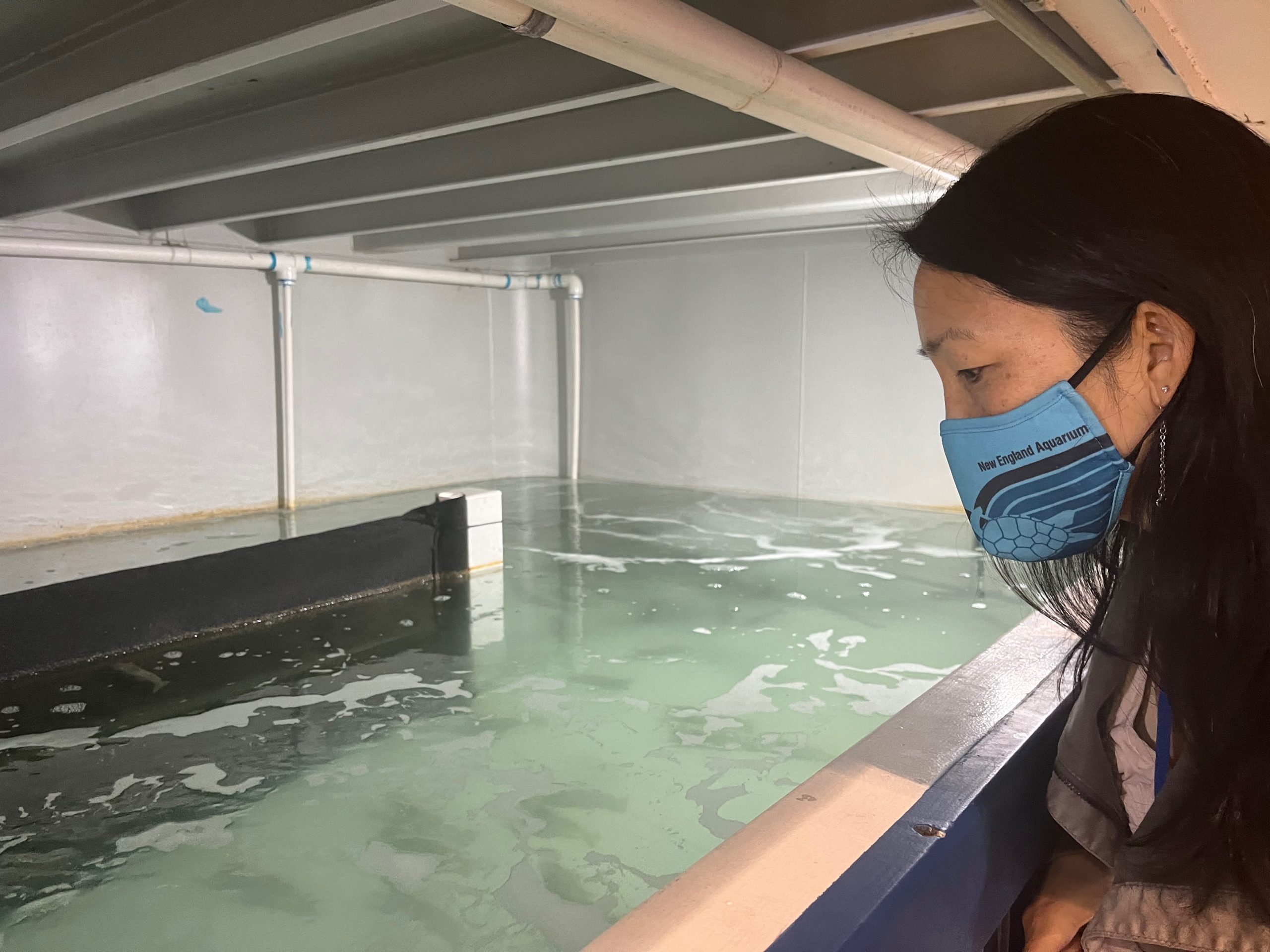
P.S. While not as popular in the Northeast, you may be able to find U.S. wild-caught blue catfish at your favorite grocery store or fish market, along with other species of catfish, such as U.S. farmed channel catfish (Ictalurus punctatus) — both are great environmental choices!
P.P.S. You may have been wondering why I’ve been including the scientific (Latin) names for different species. Many species go by more than one common or regional name (for example, you may hear Atlantic blue crab called Chesapeake blue crab, or just blue crab). To add to the complexity, several different species may also use the same common name! For example, two very different species of fish, Argyrosomus regius and Polyprion americanus, are both commonly referred to as stone bass.

